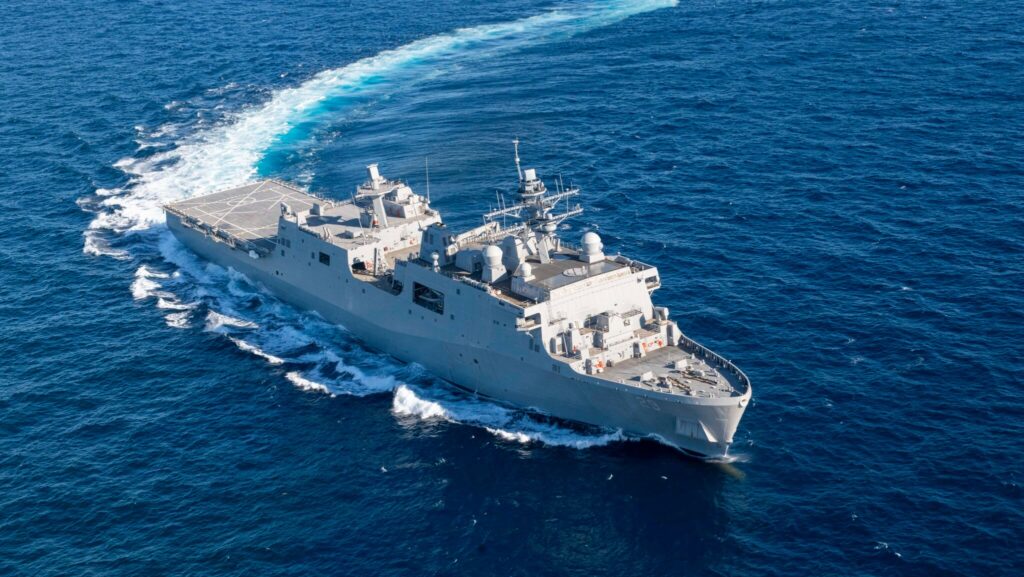
By Richard R. Burgess, Senior Editor
ARLINGTON, Va. — The U.S. companies that supply components and parts for the U.S. Navy’s amphibious warfare fleet expressed support for the Marine Corps baseline requirement of 31 large and medium amphibious warfare ships in the U.S. fleet and the industry’s need for stability and predictability in schedules.
Retired Coast Guard Capt. Paul J. Roden, chairman of the board of the Amphibious Warfare Industrial Base Coalition (AWIBC), which represents approximately 650 companies throughout the United States, told Seapower that the Marine Corps has stressed that “ready and available” 31-ship requirement is “not a ceiling, it’s the floor.”
Roden stressed the point that it is difficult for suppliers to produce efficiently when production schedules are unpredictable. He said that the stability needed is best achieved when the large-deck amphibious assault ships (LHAs) are built with construction intervals of four-year centers and the amphibious platform dock ships (LPDs) are built with intervals of two-year centers.
Full funding by Congress for LPD 33 in the fiscal 2025 defense budget is a priority for the AWIBC, he said.
AWIBC recently conducted a survey of its member companies.
Regarding the shipbuilding intervals, “50% of the survey respondents replied that extending those would result in an increase in cost of their products and services. When you are throwing uncertainty to any procurement, then there is risk, and risk is addressed by cost, so it is really in the Navy’s best interest to maintain those centers.”
Roden said that if an LHA or LPD were delayed by a year or more, “40% of all of our members [companies] would anticipate needing to lay off workers due to uncertainty and not having full capacity in plants of the AWIBC suppliers. About a third said they would have to explore commercial contracts as well as de-prioritize shipbuilding, but in many cases, there is just not a commercial market.”
He said that “about 70% of our respondents said that the most helpful thing that the government could do is provide predictability and stability.
“One way of going about that — that has been proven successful in other programs—is through multi-ship and multi-year procurement strategies,” he said.
Roden also said that “just over 50% of the suppliers that contribute to both amphibious warship and submarine programs … said that steady amphib contracts benefit their company’s capacity and capability to deliver on submarine programs. Having predictability and stability in shipbuilding programs allows suppliers to make investments. If they know the business is coming, they can make investments in work force training, enhancing work force, investing in equipment, investing in other infrastructure that would improve the quality and on-time delivery of products.”
- BlueHalo to Test C-UAS System on Marine Corps JLTV - April 29, 2024
- USS George Washington Deploys to U.S. Southern Command, Eventually Headed to Japan - April 26, 2024
- SECNAV Advocates Increased Legal Immigration to Increase Shipbuilder Workforce - April 23, 2024



